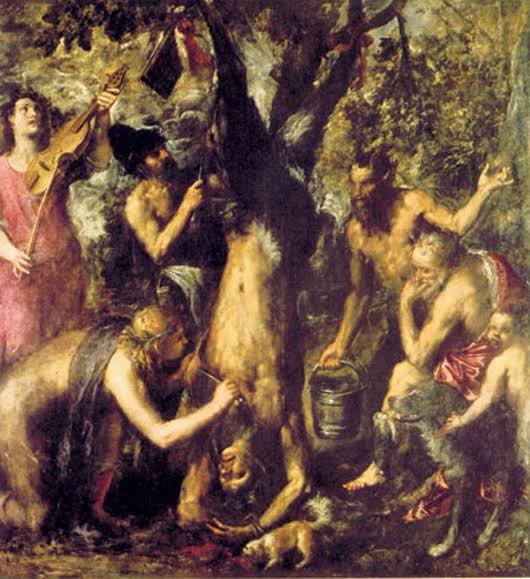Summary of Jarrett Earnest’s interview with Judy Millar ‘Brushstrokes’
From: Earnest, Jarrett. “Judy Millar - Brushstrokes.” Essay. In Documents 1, Firsted., 1:326–52. Auckland: Michael lett, 2021.
Jarrett Earnest is an American writer and curator living in New York.
Author of: Earnest, Jarrett. What it means to write about art: Interviews with art critics. NY, NY: David Zwirner Books, 2018.
Editor of: Murry, Jesse, Jarrett Earnest, and Hilton Als. Painting is a supreme fiction: Writings by Jesse Murry, 1980-1993. Chicago, IL: Soberscove Press, 2021.
JE: What painting is on a deeper level, its cultural function, but also an extension of consciousness itself.
The thing that is interesting to me right now is that painting has reemerged as an extremely vita, if not dominant form, after being considered on its back foot for so long.
Judy M questions whether she ever really had to fight for painting, although she did have big doubts about the possibitity of painting being a contemporary force, because a lot of painting at the time was playing an endgame and therefore an end is expected.
She visited Italy, saw glorious history of the medium and thinks that she is playing the wrong game. That she was interested in the wrong things. That there must be a contemporary was for this history to continue.
Robert Ryman
https://www.theguardian.com/artanddesign/2019/feb/11/robert-ryman-painter-appreciation
Robert Ryman – Judy M loves his work but thinks he took it as far as it could go, ‘breaking the painting down into its constituent parts’. And so what’s left? Well, let’s bring space back into painting. Let’s bring illusion – painting is both a physical object and illusion. She started back painting by trying to understand the physicality and the illusionistic co-existing.
“It seems to me that’s the biggest problem we have in life, that we live in a double world, the mental world and the physical world, and it’s so hard to bring them together. The world of our imagination, our dreams, our aspirations, our ideals, and at the same time this stubborn physicality. Our inner world and our outer world.” JM
JE: part of what painting does as a technology is that is is both an image and object – it meditates between its existence in those two realms.
We live in this moment that is so dominated by immaterial things – unstable, transient images – we need painting differently than before. Painting providing us with something embodied.
Kubler’s The Shape of Time 1962.
https://en.m.wikipedia.org/wiki/The_Shape_of_Time
JM talks of the physicality of the painting and the physical act of painting as difficult for her to separate out. Because of her process. She thinks that every painting is a proposition. “What has interested me, and still does, is that the more unmediated I try to make the work – as an activity, as an action – the more mediated the result can look.”
“…the whole process of putting paint on the surface and wiping it away with a cloth stared out like a cleaning activity, …… The more aggressively I tried to do that, or the more paint I applied, and the more I tried to wipe it off the more I produced marks that really look like mimics of paint strokes, or brushstrokes. So things that looked like mediated brushstrokes emerged even tough the brush was never involved.”
“And the fact that I was undoing the painting by taking the paint off, I felt like I was also undoing myself. And I was ending up with a mimicry in some respects, of what would be considered a normal painting activity with a brush.”
JE: violence in painting (although he doesn’t recognize that in JM’s work), reminds him of ‘The Flaying of Marsyas’, by Titian c.1575.
Make it stand out
Whatever it is, the way you tell your story online can make all the difference.
JE: This painting is like a manifesto about what painting is. The God Apollo is stripping the skin off the satyr, and that is what the painter is doing to the image.
JM: painted surface is like a skin, stretched over something and it has a certain tension on it. It’s a skin hiding a skeleton structure just like we have. Paintings display a physicality but carry a fiction on their surface.
JE: both question ‘What is the Self?’ and an aspiration for the painting to be a kind of undoing of the Self or evacuation of the Self.
JE: “The idea of unmaking a self is so complicated, because the predominant mode for talking about paintings right now, or at least certain kids of paintings, is so grounded in biography and in aspects of identity. “
JM: “…..I build up one colour over another to gain luminosity. I guess the differenceis that I bring the line to the work at the end, where you would normally start…” Like painting backward. JM dislikes the word gesture, prefers drawing.
JM: “…..paintings come out of paintings, come out of paintings, come out of paintings. And whether they’re coming our of your own previous paintings or whether they’re coming of paintings you know about, or have seen or experienced, they belong to themselves before they belong to the painter, I think.”
Ann Hamilton – American visual artist. https://www.annhamiltonstudio.com
https://en.m.wikipedia.org/wiki/Ann_Hamilton_(artist)
Her work is so often disassembling or erasing or the gesture of undoing.
JM spent some time working with her as an assistant for a project she was doing at MOMA. They had to unpick all these second hand red clothes, like animal pelts, and piled them up high.
JM started to be interested in what would happen if a painting traversed the space between the wall and the floor.
JE: What’s your feeling about a legible hand-print in painting?
JM: I’ve tried, of course, but it’s such a mark of presence of the artist. I’ve been trying to do the opposite, which is make the artist not present.
